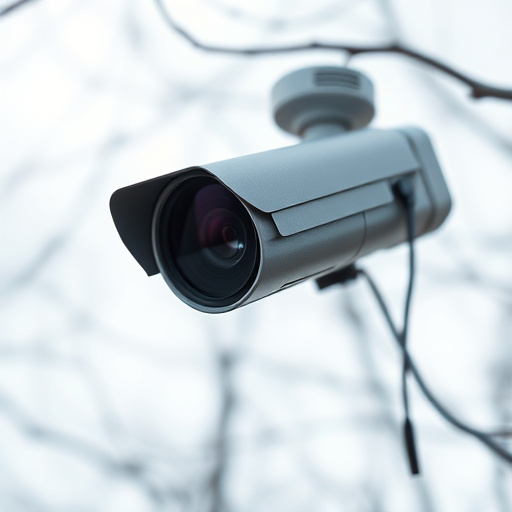In today's digital era, hidden cameras for home monitoring have become a common tool for personal security, but they also raise legal and ethical concerns. Individuals can protect their spaces with diverse options, from integrated camera modules to advanced wireless systems. Counter-surveillance experts use tools like infrared thermal imaging, UV light, and RF signal detectors to uncover covert recording devices, employing meticulous visual inspections and technology-driven methods. Legal considerations include strategic placement, privacy rights respect, and strict adherence to data protection laws when storing recorded footage.
In an era where privacy is increasingly elusive, understanding hidden cameras for home monitoring has become crucial. This comprehensive guide delves into counter surveillance sweeps, equipping professionals with essential tools and strategies to uncover concealed devices. From recognizing the evolving landscape of hidden cameras to implementing effective sweep techniques, we explore practical methods. Additionally, legal considerations and ethical boundaries in home monitoring are addressed, providing a balanced perspective on this intricate issue.
- Understanding Counter Surveillance: The Rise of Hidden Cameras
- Professional's Toolkit: Uncovering and Detecting Hidden Cameras
- Effective Strategies for Conducting a Comprehensive Sweep
- Legal Considerations and Ethical Boundaries in Home Monitoring
Understanding Counter Surveillance: The Rise of Hidden Cameras
In today’s digital era, the landscape of surveillance has evolved dramatically with the proliferation of hidden cameras. Once a realm reserved for professional investigators and law enforcement, the use of concealed recording devices has become increasingly common among folks seeking to protect their homes and families. Hidden cameras for home monitoring have revolutionized personal security by enabling individuals to navigate their environments with enhanced vigilance.
These sophisticated pieces of technology offer a level of discretion that was previously unimaginable. From subtle camera modules disguised as everyday objects to advanced wireless systems, the options are vast and varied. This shift towards hidden cameras underscores the growing need for professional methods in counter surveillance. As these devices become more accessible, so does the importance of understanding how to detect and counteract them effectively.
Professional's Toolkit: Uncovering and Detecting Hidden Cameras
In the realm of counter surveillance, professionals employ a sophisticated toolkit to uncover and detect hidden cameras, especially those used for home monitoring. The initial step involves a meticulous visual inspection, where experts look for any signs of unusual equipment, cables, or modifications that could indicate the presence of covert recording devices. This includes checking common locations like corners, ceilings, doors, and windows, as well as examining appliances and furniture for hidden compartments or cameras integrated into everyday objects.
Advanced tools such as infrared thermal imaging cameras, which can detect heat signatures from electronic components, are instrumental in this process. UV light sources and specialized detectors can also expose hidden cameras by revealing their invisible light-reflecting properties. Additionally, professionals use signal detectors capable of identifying radio frequency (RF) signals emitted by hidden cameras, ensuring that even the most sophisticated surveillance devices do not go unnoticed.
Effective Strategies for Conducting a Comprehensive Sweep
Conducting an effective counter surveillance sweep requires a systematic approach and a keen eye for detail. Start by meticulously inspecting all accessible areas, including walls, ceilings, and floors, as hidden cameras for home monitoring can be strategically placed in these locations. Use specialized equipment like infrared thermal imaging cameras, which can detect heat signatures typically emitted by electronic devices, to uncover potential covert surveillance equipment.
Additionally, employ non-invasive techniques such as radio frequency (RF) sweeps to identify wireless signals and monitor communication patterns. By combining visual inspections with advanced technology, you can ensure a comprehensive sweep, leaving no stone unturned in your search for unauthorized monitoring devices.
Legal Considerations and Ethical Boundaries in Home Monitoring
In the realm of home monitoring, the deployment of hidden cameras has become a prevalent method for enhancing security and peace of mind. However, it’s crucial to navigate the intricate legal considerations and ethical boundaries that surround this practice. The use of surveillance technology in private residences must adhere to stringent regulations aimed at protecting individual privacy rights. In many jurisdictions, instalation and operation of hidden cameras are subject to strict rules, including obtaining consent from all occupants and ensuring reasonable expectations of privacy are respected.
Ethical dilemmas arise when balancing the benefits of home monitoring against potential infringements on personal freedoms. For instance, placement of cameras should be strategic, minimizing intrusion into areas typically considered private spaces like bathrooms or bedrooms. Professionals undertaking counter surveillance sweeps must also be mindful of data protection laws, ensuring recorded footage is securely stored and accessed only by authorized personnel.
In an era where privacy concerns are paramount, understanding and countering hidden cameras for home monitoring is essential. This guide has equipped professionals with a comprehensive toolkit and strategies to detect and uncover these clandestine devices. By navigating legal considerations and ethical boundaries, it’s possible to revolutionize home security without infringing on personal freedoms. Remember that staying ahead of evolving surveillance methods is key to fostering a safe and secure environment.
